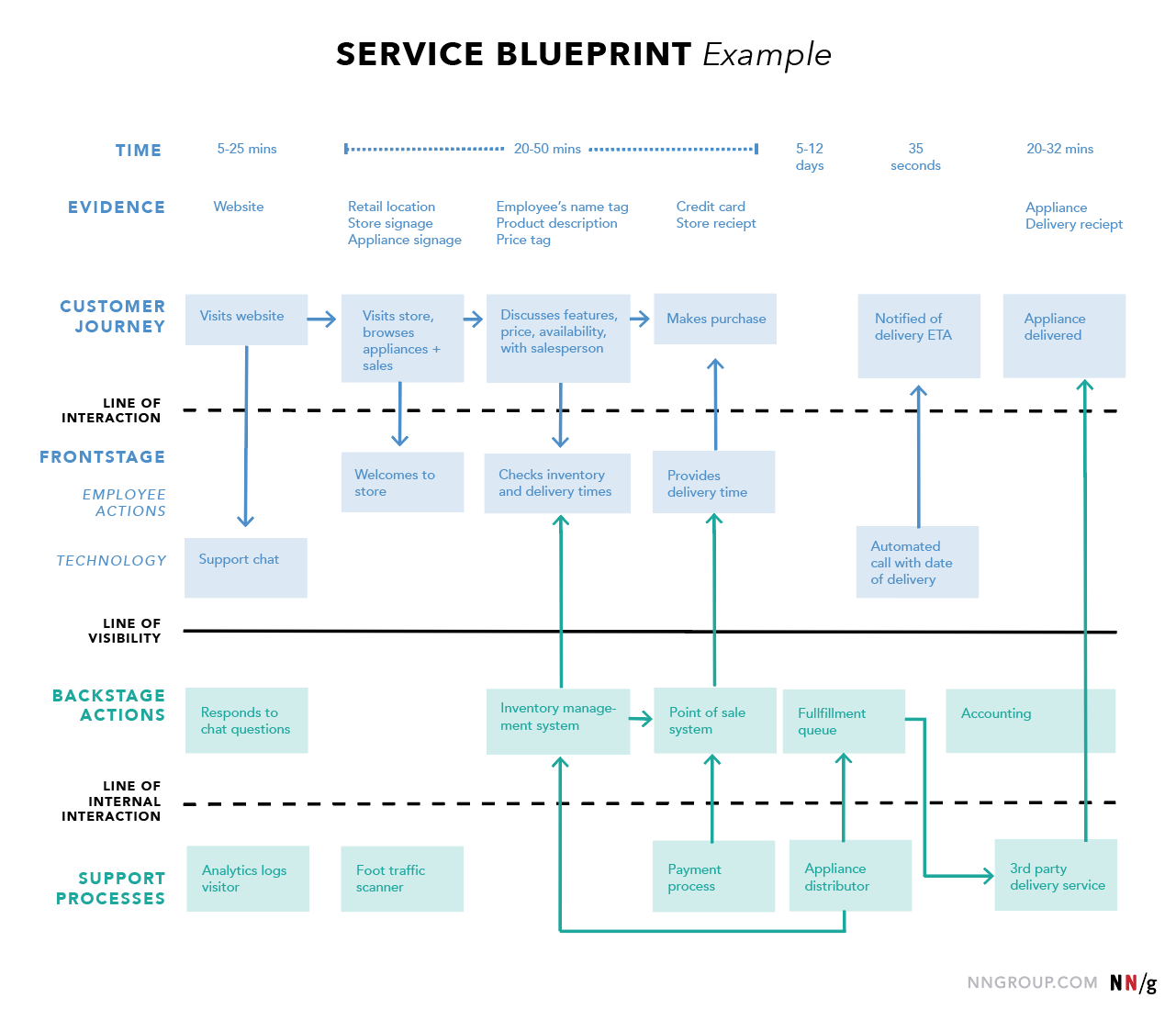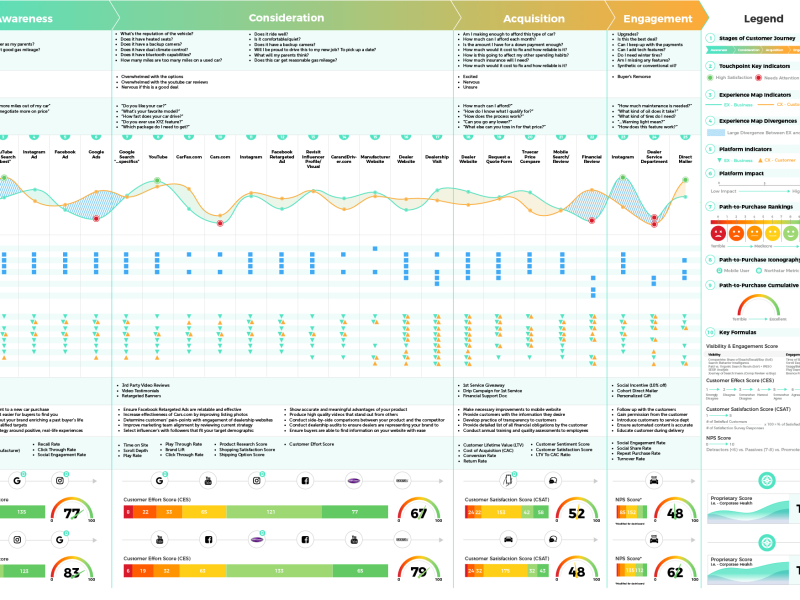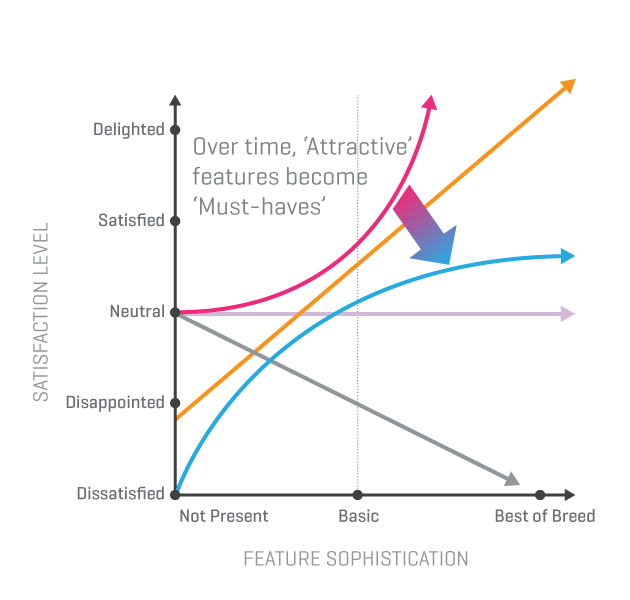A Comprehensive Guide on Service Blueprint
In today’s competitive landscape, understanding and optimizing service delivery has become a cornerstone of successful businesses. One powerful tool that organizations can leverage to achieve this is the service blueprint.
But what exactly is a service blueprint, and why is it so impactful? In this guide, we’ll delve into the fundamentals of service blueprints, their benefits, common use cases, and how to create one, with actionable insights and real-world examples.
Understanding the Service Blueprint
A service blueprint is a visual representation of the processes, interactions, and resources involved in delivering a service.
It helps organizations map out the complete service journey—both front stage (customer-facing interactions) and backstage (internal operations that support the service).
Key Components of a Service Blueprint
- Front Stage: Represents all customer-visible actions and touchpoints, such as interactions with employees, digital platforms, or physical spaces.
- Backstage: Includes behind-the-scenes activities that support front-stage actions, like employee training, equipment maintenance, or inventory management.
- Support Processes: Covers broader organizational processes that underpin both the front and backstage operations, such as developing policies, monitoring quality, or handling customer feedback.
- Customer Actions: Maps out customer behaviors and interactions with the service, such as making a purchase, requesting support, or leaving a review.
- Points of Interaction: Highlights critical moments when customers engage with the service, providing insights into where improvements might be needed.
Why Service Blueprints Matter
Service blueprints are more than just diagrams; they are strategic tools that offer several benefits:
- Customer-Centric Perspective: By viewing the service through the customer’s eyes, organizations can better understand pain points and opportunities.
- Operational Clarity: They provide a unified framework for teams to analyze service workflows, identify inefficiencies, and implement changes collaboratively.
- Continuous Improvement: Service blueprints help organizations adapt to evolving customer needs and technological advancements.
Steps to Create a Service Blueprint
Developing a service blueprint involves a systematic process to ensure a comprehensive representation of the service. Here’s a step-by-step guide:
1. Identify the Customer and Service
Define your target audience and the specific service being analyzed. Understand customer needs, expectations, and pain points through research methods like surveys, interviews, or journey mapping.
2. Map the Service Process
Break down the service into logical stages, documenting both front-stage and backstage activities. Include all touchpoints, actions, and processes, ensuring no detail is overlooked.
3. Highlight Customer Actions and Interactions
Capture how customers interact with the service at each stage. For instance, in an e-commerce setting, this might include browsing products, adding items to a cart, and completing a transaction.
4. Analyze and Identify Improvement Areas
Examine the blueprint for inefficiencies, bottlenecks, or gaps. Look for moments where customer expectations might not align with the service delivered.
5. Develop and Implement Solutions
Based on your analysis, design actionable improvements. Whether it’s streamlining a process, introducing new technologies, or enhancing employee training, ensure the changes align with customer expectations.
Real-World Applications of Service Blueprints
1. E-Commerce Platforms
An online shopping website might use a service blueprint to identify issues like slow loading times or confusing navigation. By mapping the customer’s journey from browsing to checkout, the organization can streamline processes to enhance user experience and reduce cart abandonment rates.
2. Customer Service Hotlines
A customer service hotline can use service blueprints to reduce call wait times and improve agent responses. By analyzing interactions, they can identify training needs and implement automated systems for repetitive inquiries.
3. Hospital Emergency Rooms
Hospitals use service blueprints to optimize patient care. For example, they can map patient interactions from registration to discharge, pinpointing delays and improving communication between medical teams.
4. Public Transportation Systems
Blueprints help transit authorities improve reliability and convenience by identifying gaps in scheduling, maintenance, or passenger information systems.
Benefits of Service Blueprints
A well-crafted service blueprint offers numerous advantages:
1. Improved Customer Experience
By identifying gaps in service delivery, blueprints help organizations create seamless, enjoyable experiences for customers.
2. Enhanced Efficiency
Organizations can eliminate redundancies, streamline operations, and reduce costs through better workflow management.
3. Fostered Collaboration
Service blueprints provide a common language for cross-functional teams, fostering better communication and shared understanding of goals.
4. Increased Innovation
By visualizing the entire service ecosystem, businesses can identify areas ripe for innovation and experiment with new approaches to service delivery.
Common Mistakes in Service Blueprinting
While service blueprints are powerful tools, there are pitfalls to avoid:
1. Excluding Stakeholders
Failing to involve all relevant stakeholders—from front-line employees to managers—can result in an incomplete or biased blueprint.
2. Overlooking Actionable Insights
A detailed blueprint is only useful if it leads to tangible improvements. Focus on generating actionable recommendations rather than creating a static document.
3. Neglecting Testing and Evaluation
Ensure the blueprint is based on accurate, up-to-date information. Regularly test and refine it to address changing customer needs and operational realities.
Service Blueprint Examples
To further illustrate the value of service blueprints, here are some examples:
- Retail Stores: A blueprint for a physical retail store might include customer interactions with sales associates, the layout of the store, and the checkout process.
- Healthcare Providers: Mapping patient journeys, from appointment scheduling to post-treatment follow-ups, can highlight areas to enhance patient satisfaction.
- Software Services: A SaaS company might analyze user onboarding processes, identifying pain points that hinder adoption or engagement.
How to Maximize the Impact of a Service Blueprint
To get the most out of your service blueprint:
- Leverage Data: Use customer feedback, analytics, and operational data to inform your blueprint.
- Iterate Regularly: Treat the blueprint as a living document, updating it as processes evolve.
- Involve Customers: Engage customers in the blueprinting process to gain authentic insights into their experiences.
Conclusion
A service blueprint is an invaluable tool for organizations looking to optimize their service delivery. By providing a comprehensive view of the service process—from customer interactions to backend operations—it enables businesses to identify opportunities for improvement, foster collaboration, and innovate effectively.
Whether you’re running an e-commerce platform, managing a healthcare facility, or operating a transportation system, service blueprints can help you deliver exceptional customer experiences while driving efficiency and growth. Embrace this tool to not only meet but exceed customer expectations in today’s dynamic market.


